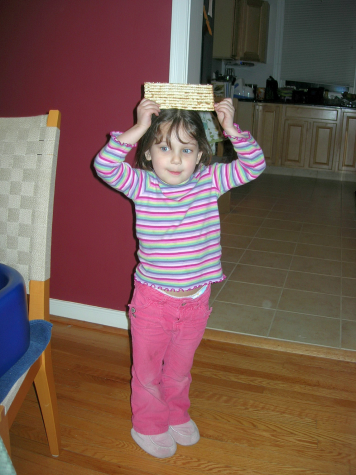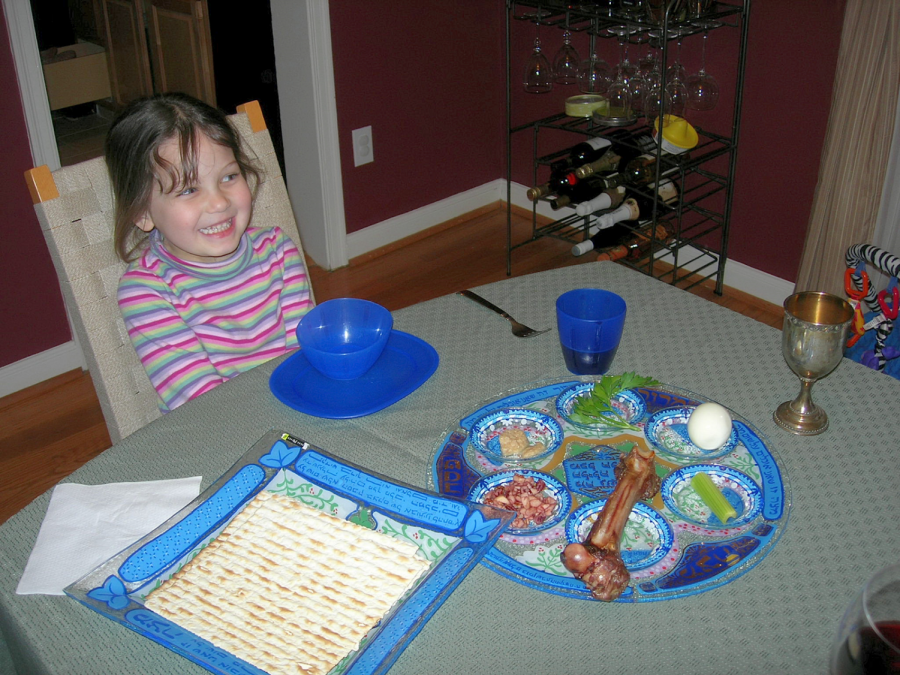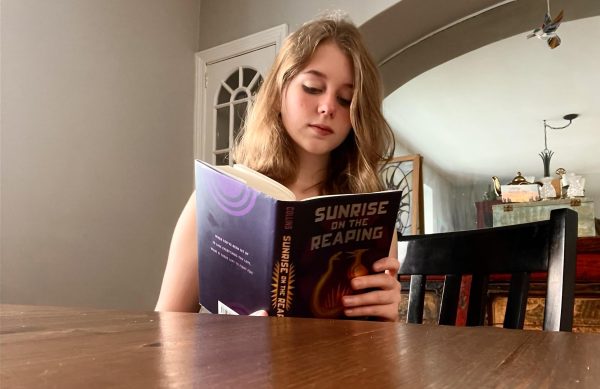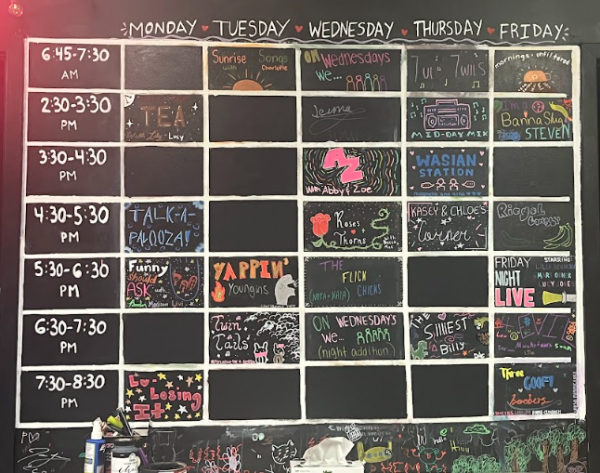Passover, the Jewish Holiday of Freedom
A younger, gleeful Sophia Khan awaits her favorite dish, Matzah Ball Soup.
If you enter my home during April 8-16, you may notice the pantry cleaned and lined with tin foil, boxes of Chex Mix and Cheerios replaced with Magic Max’s cereal, loaves of bread replaced with boxes of matzah, and brownies replaced with macaroons. My house is cleaned of any possible crumbs or leavened bread products (bread, pasta, crackers, etc.). The house is ready for Passover.
The Jewish holiday of Pesach or Passover is celebrated on the 15th of Nisan, the seventh month in the Jewish lunar calendar. On the Gregorian calendar, it begins on April 8, 2020. The holiday is celebrated for eight days in most of the world; however, it is celebrated for seven in Israel.
Passover commemorates the exodus of the Jewish people from Egyptian slavery. As the Torah says, God sent Moses to the Pharaoh of Egypt to demand the freedom of the Jews. When Pharoh refused, God sent ten plagues to torture the Egyptians. The Jews placed lamb blood on their door frame to be spared from the plagues. The plagues, in order, are as follows: the water turned to blood, frogs gathered, lice flew to hair, flies swarmed, a pestilence that killed domestic animals, boils, hail, locusts flocked, darkness over the land, and the death of all first-borns. After the tenth plague, the Pharaoh finally relented and forced the Jews to leave. With such little time to prepare for what would become a long march, the Jews had to grab their bread before it had a chance to rise.
The Passover Seder is a ritual feast that marks the start of the Passover holiday. It can last for hours, and the actual meal starts halfway through. During the Seder, Jews read the Haggadah, a book that outlines the order of the Seder as well as retells the Passover story. A traditional Seder plate holds six sections: Karpas or greens, Haroset or sweet fruit, Maror or a bitter herb, Hazeret or a second bitter herb, Zeroa or a shank bone, and Beitzah or an egg. Many traditions during the Seder represent events in the Passover story. Karpas, a vegetable dipped in saltwater, reflects the tears of the Jews in slavery and the leg of lamb is symbolic of the lambs’ blood on the doorway.

The Passover story is about freedom and liberation. The holiday may seem somber, with the lack of bread and long retellings of the story, but it is a holiday to remind us of how we came to our freedom. A common tradition is hiding matzah for the youngest child to find, a hilarious and fun event! During the meal, Jews recline on pillows, a leisurely act that reflected freedom in Egypt. The door is open and a wine cup is left for Elijah, who is said to arrive to herald the Messiah. There is something quite magical about the glow of doors on the street being opened and letting the laughter and warmth spill out.
Unfortunately, this year the holiday will have to be celebrated differently from past years due to the COVID-19 pandemic. In order to comply with the Pennsylvania shut-down decree and social distancing order, many families are planning to enjoy the Seder with extended relatives via Zoom or another video conferencing app.
Chag Pesach Sameach!











Rachel Plasky • Apr 6, 2020 at 6:03 pm
Things are certainly different this year. This is our first Seder at our house (and I have to make all of the food!). There is a kind of irony in a “plague” affecting Passover, though.